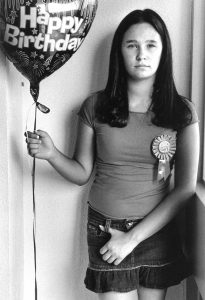By Dave Paone
Campus News
These days, everyone is a photographer. If you have a phone, you have a camera, and that makes you a photographer, right?
Not really.

The “point-and-shoot” capability of today’s technology won’t guarantee a fabulous picture... or even a mediocre one. But if you follow a few, simple rules, just about everyone can take a nice portrait and portraits are the most popular genre of photographs.
This advice applies whether you have a dedcated SLR camera to shoot with or just are using your smart phone.
Get Close. A famous photojournalist, Robert Capa, once said, “If you’re pictures aren’t good enough, you’re not close enough.” This is almost 100% true. (On a rare occasion, you’re better off being farther back.) Of course you don’t want to intimidate your subject by being on top of him, but if you’re shooting with a longer lens, you’ll be at a comfortable distance to start with.
Choose the Right Lens. The biggest mistake in portraiture is choosing the wrong lens. If we use the specs from 35mm, film photography, a 50mm lens is called “normal.” That means there’s little or no difference in the appearance of a subject when looking through the lens. The subject appears to be at the same distance through the lens as he is in real life.
Anything wider than 50mm is called “wide angle.” The wider the angle, the more distortion of the subject. So shooting a portrait with a 28mm lens is huge mistake. It’ll make big noses look even bigger. A wide angle lens isn’t flattering to just about everyone’s face. A wide angle lens also makes the subject appear farther away than he is in real life. So the photographer’s reaction is to get closer, but the closer you get with a wide angle lens, the more distortion there is.
Selfies by nature are taken at a close distance (arm’s length) and with a wide angle lens. That’s why selfies are amateur photography. Pros don’t shoot selfies.

Anything longer than 50mm is called “telephoto.” A telephoto lens makes the subject appear closer than he is in real life, as a telescope does. The longer the lens, the more it flattens the subject. So a long lens is good for someone with a large nose. It won’t exaggerate it, but flatten it, instead, making the subject look more flattering. Even if the subject doesn’t have a large nose, longer is just more flattering overall.
So the trick is to use a 50mm lens or longer. Seventy-five or 80 millimeters are very nice portrait lenses. On a phone there’s no way of knowing exactly what millimeter you’re at, so zoom until you pass what looks like 50.
Plain Background. Busy backgrounds are distracting. A solid-colored wall or even a door will make for plain backgrounds and will emphasize the subject, which is the whole point of the picture.
Soft Light. Direct sunlight is not a help. Believe it or not, an overcast day works better. Or even a partly cloudy day. If there’s direct sun, move your subject into the shade. If you’re indoors, shoot with indirect sunlight coming through a window.
These four rules are all you need to follow to shoot a nice portrait.

Once you do them, you can mix things up a little by adding a few variations. Items that belong to the subject or T-shirts with slogans can add new information about the subject. The picture should still be about the subject first, with the items only enhancing what we want the viewer to know.
Here’s your summer assignment: go shoot some nice portraits. You’ll get more Facebook and Instagram likes than you’ve ever gotten before!








Facebook Comments